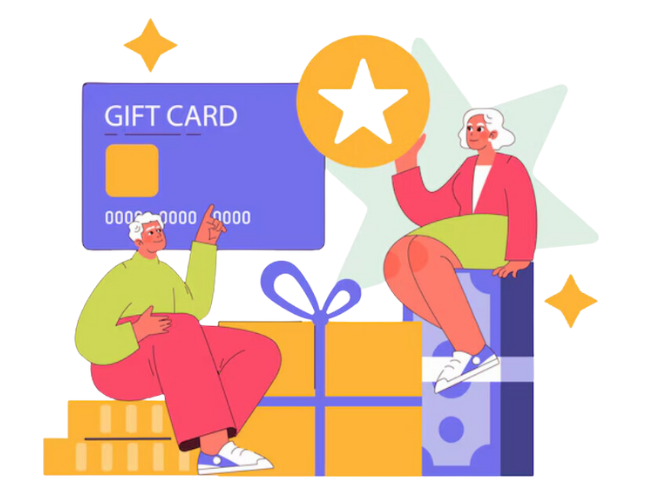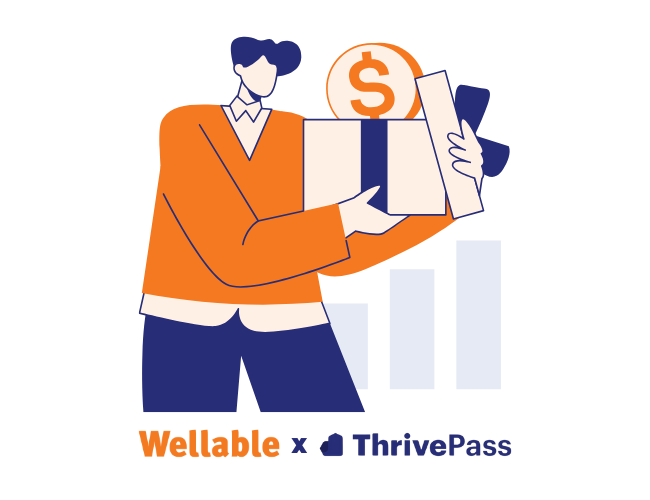Short on time? Here are the key takeaways:
- Wellness incentives provide the motivation needed to engage employees who may not otherwise participate in health programs.
- A flexible, points-based rewards system allows employees to earn incentives aligned with their goals, efforts, and interests.
- Immediate monetary rewards for one-time clinical events drive participation by providing the timely motivation needed to overcome effort and planning barriers.
- Clear communication is essential to a successful rewards program. Employees must understand what’s offered, how to earn rewards, and why participation benefits them.
While some employees are naturally motivated to join wellness programs, others might need an extra push to get involved. The question on the latter group’s mind is often, “What’s in it for me?”
A wellness incentive program can significantly boost engagement and encourage even the most reluctant individuals to participate in health initiatives. By understanding what drives employees and designing a clear system of rewards, you can create a program that makes wellness appealing, achievable, and gratifying.
What Is a Wellness Incentive?

A wellness incentive is a reward offered to employees as motivation to participate in company wellness programs. Incentives can range from physical rewards like fitness gear and gift cards to more experiential rewards like extra paid time off or public recognition. The goal is to kickstart healthy habits, encourage wellness program engagement, and support sustained well-being.
Why Should You Include Incentives in a Wellness Program?

Implementing a wellness rewards program offers several benefits:
- Increases participation: Incentives give employees a tangible reason to join wellness programs, especially those who might otherwise be reluctant.
Among Wellable clients, programs that include rewards see average engagement rates of 59.3%, with top-performing organizations reaching up to 89.3% by thoughtfully designing their incentive strategy. Read the full white paper here.
- Drives consistency: Regular rewards for reaching milestones help maintain momentum and prevent drop-off after the initial excitement of a program’s launch.
- Encourages healthy behaviors: Offering incentives for specific wellness activities (e.g., fitness challenges, stress management workshops, nutrition courses) motivates employees to adopt healthier habits they might not otherwise pursue.
- Boosts morale: Rewards provide employees with a sense of achievement and recognition, which can improve workplace morale.
- Enhances company culture: A wellness incentive program demonstrates a company’s commitment to employee well-being, strengthening the organization’s culture and brand.
6 Steps to Building an Employee Incentive Program
1. Know Your Audience

Without incentives that resonate with your unique workforce, participation may fall short. For example, an employee who runs daily may be incentivized by the prospect of new fitness gear or a free gym membership. On the other hand, an employee who is still developing healthy habits may be more attracted to rewards like event tickets or extra paid time off.
To create a wellness rewards program that motivates everyone, gather data through surveys, focus groups, and polls. Key questions to ask include:

Offering a range of incentives can make the wellness program more appealing to employees at all stages of their health journey.
2. Determine Program Structure

Wellness incentive programs can be structured as one-time events or ongoing initiatives. A one-off program (e.g., month-long walking challenge with an immediate reward upon completion) can be easier to launch and may generate excitement quickly, as employees are motivated by the short-term nature and immediate rewards. However, a continuous program (e.g., year-round fitness challenge with periodic rewards) promotes sustained engagement and results in long-term behavioral changes.
In general, Wellable recommends continuous programs over one-off challenges because they require the diligence, time, and mental endurance needed for permanent lifestyle transformations. A blended approach (quarterly challenges combined with year-round rewards) can also encourage sustained healthy habits.
3. Create Clear and Attainable Benchmarks

Determine which behaviors to incentivize based on your organization’s wellness goals and employee interests. Benchmarks should be flexible and varied to accommodate all levels of health. They should also be clearly defined to make it easier to track progress and reward success (but not so difficult that employees become discouraged).
For example, a goal like “complete a marathon” is daunting for most employees, especially those who are new to fitness. A more inclusive goal would be “engage in physical activity for 30 minutes a day” or “attend one fitness class a week.” Benchmarks like these are specific, measurable, and realistic, ensuring that employees can participate at their own pace while still feeling motivated to make progress.
4. Create a Points-Based System

Creating a point-based system quantifies employees’ efforts and provides a clear structure for participation. When designing a points system, consider the effort and time investment involved in each activity. For example, attending a one-hour wellness seminar might be worth fewer points than completing a month-long wellness challenge.
A potential breakdown could look like:
- Low time/effort activities (e.g., logging a short walk or drinking a certain amount of water per day): 10 to 20 points
- Moderate time/effort activities (e.g., completing a 45-minute HIIT fitness class or attending a wellness webinar): 20 to 50 points
- High time/effort activities (e.g., completing a 40-mile bike ride or attending a multi-session workshop): 50 to 100 points
Additionally, consider which behaviors closely align with the company’s wellness priorities and reward those more heavily. For instance, if reducing stress is a key organizational goal, completing a meditation course or attending a mental health workshop might be worth more points than less critical activities, such as signing up for a nutrition webinar.
Convert Points to Rewards

Once a points system is established, outline how employees will redeem their points for rewards. Offering a variety of options ensures the program appeals to employees with different interests and wellness goals. Here are some ways points can be converted into meaningful rewards:
- Wellness-related prizes: Employees can exchange points for items like fitness gear, rewards wallet gift cards, or wellness subscriptions. Low-point value rewards could include a mindfulness app subscription, while higher-point value rewards might include a wearable fitness device.
- Work-life balance incentives: Extra time off or flexible work arrangements can be highly motivating for many employees. For example, employees might redeem a moderate amount of points for a work-from-home day, while a higher volume of points could be exchanged for an additional paid day off.
- Benefits-based rewards: Rewards like extra Paid Time Off (PTO) or a lifestyle spending account (LSA) deposit support financial well-being, employee health, and work-life balance. Among Wellable clients, these types of rewards have led to the highest engagement rates, with an average of 65.9%.
Related Article: 25 Incentive Ideas For Your Employees
5. Communicate and Promote

Wellness incentives can drive engagement only if employees are fully aware of them and understand their value. Use several communication channels (e.g., email, internal messaging platforms, team meetings) to promote the wellness rewards program and address common questions. Key points to include in communications are:
- What’s being offered? Outline the types of rewards employees can earn and highlight any flexibility in the rewards system (e.g., the option to choose rewards from a marketplace).
- How can employees earn incentives? Communicate the specific benchmarks employees must meet to earn rewards and explain how they will track progress.
- Why should they care? Emphasize the benefits of participating beyond the rewards themselves. Explain how the wellness program can improve health, reduce stress, and enhance work-life balance. The message should not only focus on what they can get but also why it’s worth their time and effort.
Conclusion
A wellness program without incentives can feel like just another item on the to-do list and be easily overlooked or forgotten. Meaningful rewards transform wellness from a passive initiative into an active, engaging experience. A wellness incentives program creates a culture where well-being and effort are recognized and rewarded. This gives employees a reason to join the program, stay committed, and strive for optimal health inside and outside of the workplace.












